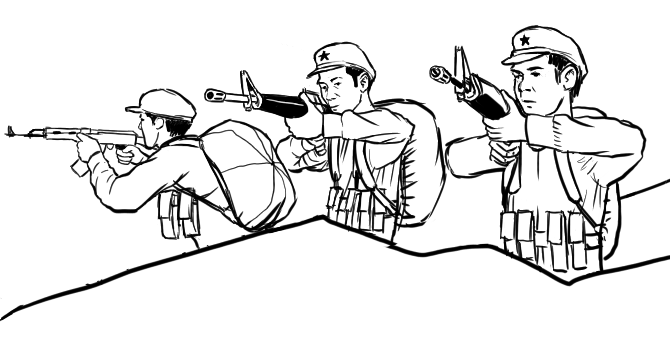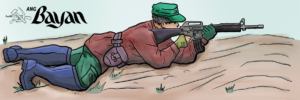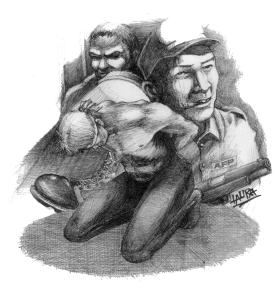Spies and paramilitaries are legitimate military targets


In its failed case, the Department of Justice cited nine incidents to prove its allegation that the Communist Party of the Philippines (CPP) and the New People’s Army (NPA) are “terrorist organizations.” The court dismissed the case and said that the incidents were insufficient to prove the allegation. To help further clarify and deepen the understanding of the raging war in the country, additional details on five of these incidents are presented below, even as information on the other four are consolidated.
Contrary to the DOJ’s claim that they are “civilian victims,” Bandi Astudillo and Zaldy Ibañez are legitimate military targets, as well as Jomar Bocales, Alberto de la Peña and Artemio Moldez, and Ryan Badiang. They are members of Bagani, Magahat and other paramilitary groups which are notorious for being anti-people and counter-revolutionary, while three are CAFGU members who are active in the AFP’s combat, espionage and psywar operations.
In the case of Bocales and his two CAFGU companions, they engaged in battle and were killed in an NPA ambush. In addition to being legitimate targets, five have individual war crimes. They are all involved in the killings, harassment and intimidation of civilians suspected as NPA supporters. They were also instrumental in forced CAFGU recruitment and other violations of the rights of their fellow Lumad and villagers.
Bocales and his group are behind the heinous Lianga Massacre of September 1, 2015 where they killed Emerito Samarca, executive director of the community school of Alcadev, Datu Bello Sinzo and Dionel Campos, leaders of the MAPASO group. Magahat members, who rule Lumad communities under the auspices of the AFP, are involved in numerous other crimes.
They also are involved in such crimes as extortion, corruption of funds, land grabbing, eviction of farmers, and more. Bandis, for one, was charged for raping his own grandchild, and attempted rape of his niece.
In the DOJ’s case, only Eli Apacible, a teacher, is a civilian. It was unfortunate that he was wearing a military hat and was among a group of soldiers when an NPA team mounted a harassment operation against soldiers who were occupying a school at the time. The NPA operation unit acknowledged the error of failing to detect the presence of a non-soldier in the military group.
The “abduction of seven civilians,” including a Ryan Badiang, lacks context. Badiang, a former member of the CAFGU was a legitimate military target being an active spy and asset of the AFP. Six other residents were with him at that time but were immediately released after verification. A 15-year-old CAFGU element named “Batik” was also released since he was a minor. There is no truth to the allegation that Badiang was beheaded. The CAFGU and AFP did not immediately retrieve his body, despite the fact that his family was immediately informed of its location. It took more than a week before they took the body, which was already in the advance state of decomposition.
All these actions are in line with the Declaration of Undertaking to apply the Geneva Conventions of 1949 and Protocol I of 1977 issued by the National Democratic Front of the Philippines (NDFP) in 1996. In mounting attacks against armed adversaries, the NPA complies with this declaration to protect the civilian population and ensure the right of hors de combat. In the declaration above, the NDFP identified units, personnel and facilities of the AFP, Philippine National Police, paramilitary forces and their personnel in intelligence as legitimate targets of the NPA. (For more details, read the article “Additional Remarks on the court decision against the terrorist label vs CPP/NPA,” October 1, 2022 on philippinerevolution.nu).








